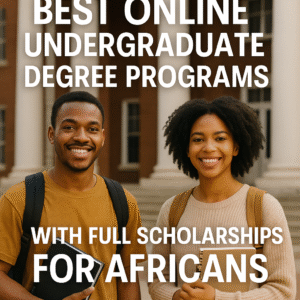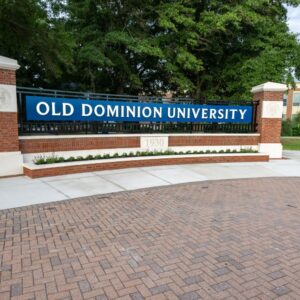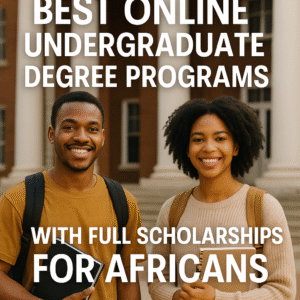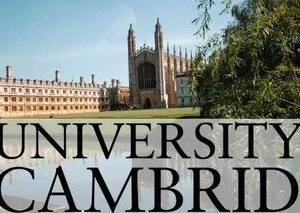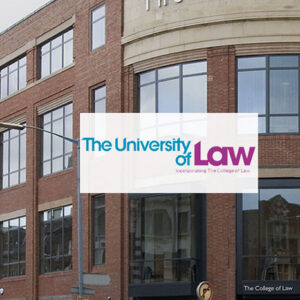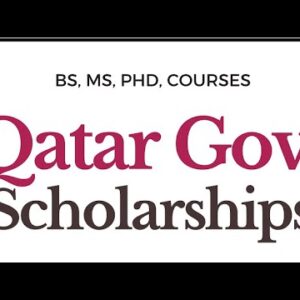
Introduction: Why Aligning Your Personal Statement with Fully Funded Scholarship Requirements Is a Game-Changer
How to align your personal statement with fully funded scholarship requirements for undergraduate programs is a question every ambitious Nigerian undergraduate should be asking.
Why? Because your personal statement is more than just an essay—it’s your direct conversation with the scholarship committee. It’s where you prove you’re not only academically capable but also the perfect match for what they’re looking for.
And here’s the reality: many talented applicants miss out on fully funded undergraduate scholarships simply because their personal statements fail to address the exact requirements. In this guide, we’ll break down how to avoid that mistake and create a statement that gets noticed.
Understanding Fully Funded Scholarship Requirements for Undergraduate Programs
Before you can align your personal statement, you must understand what the scholarship is actually asking for.
What Fully Funded Scholarships Usually Cover
Fully funded undergraduate scholarships typically include:
- 100% tuition fees
- Living stipend for accommodation, food, and personal expenses
- Books and study materials allowance
- Health insurance
- Travel costs (sometimes)
Examples include:
- Lester B. Pearson International Scholarship – University of Toronto
- Mastercard Foundation Scholars Program
- Knight-Hennessy Scholars – Stanford University
What Requirements They Expect in a Personal Statement
Most fully funded undergraduate scholarships require you to demonstrate:
- Academic excellence (grades, awards, research)
- Leadership skills (clubs, community work, projects)
- Alignment with the scholarship’s mission (e.g., sustainability, diversity, innovation)
- Future goals (and how they connect to your chosen field)
- Impact potential (how you’ll contribute to your community after graduating)
How to Align Your Personal Statement with Fully Funded Scholarship Requirements
1 :Study the Scholarship’s Mission Statement
Every scholarship program has a mission. For example:
- Lester B. Pearson focuses on academic achievement and leadership.
- Mastercard Scholars prioritize community impact and helping disadvantaged communities.
Tip: Find the mission statement on the official scholarship page. Identify 3–5 keywords and weave them naturally into your personal statement.
2 : Match Their Language in Your Writing
If a scholarship values “innovation” and “community leadership,” don’t just say, “I’m a leader”. Show them. For example:
“In 2023, I founded a STEM club at my school, mentoring younger students in robotics. Our team later won the regional innovation challenge.”
3 : Highlight Relevant Achievements
Not every award or activity is relevant. A fully funded STEM scholarship doesn’t care much about your cooking competition medal—unless you connect it to leadership or innovation.
Tip: Use examples that match the scholarship’s focus area.
4: Show, Don’t Just Tell
Instead of:
“I am passionate about climate change.”
Say:
“I organized a tree-planting drive in my community, resulting in 500 trees planted within two months.”
Specifics prove your claims.
5: Align Your Future Goals
If the scholarship supports sustainable development, your career goals should clearly connect to that.
Example:
“I aim to specialize in renewable energy engineering to create affordable solar solutions for rural Nigerian communities.”
Common Mistakes to Avoid When Writing a Personal Statement for Fully Funded Scholarships
1. Writing a Generic Statement
Sending the same essay to multiple scholarships without tailoring it reduces your chances. Always adapt to the specific scholarship.
2. Ignoring the Requirements
If the scholarship asks you to address leadership experience, don’t focus 90% on academics. Balance your content.
3. Overloading with Buzzwords
Scholarship committees want authenticity, not a string of big words. Write simply but powerfully.
4. Not Backing Claims with Evidence
If you say you “excel under pressure,” give an example that proves it.
Structure of a Winning Personal Statement for Fully Funded Scholarships
Introduction — Hook the Reader
- Open with a story or event that sparked your academic passion.
- Keep it short but engaging.
Body — Prove You’re the Perfect Match
1: Academic achievements and how they align with the program.
2:Leadership experience with measurable results.
3: Community service and impact.
Conclusion — Vision for the Future
Reinforce your goals and how the scholarship will help you achieve them. End with a strong closing line.
Examples of Strong Alignment Statements
Weak:
“I want this scholarship because I can’t afford tuition.”
Strong:
“This scholarship will not only lift my financial burden but also enable me to continue my work mentoring girls in STEM—helping bridge Nigeria’s gender gap in technology.”
Resources to Help You Write and Align Your Personal Statement
- Scholarship Positions – Personal Statement Tips
- Top Universities – How to Write a Personal Statement
Final Checklist Before Submitting Your Personal Statement for Fully Funded Scholarships
Submitting your personal statement for a fully funded undergraduate scholarship is like handing in your final exam—you don’t get a redo. Even a small oversight can cost you the opportunity of a lifetime. That’s why having a comprehensive pre-submission checklist is critical.
Here’s an expanded, scholarship-winning checklist to ensure your personal statement is polished, tailored, and ready to impress the scholarship committee.
1. Have You Tailored It to the Specific Scholarship?
Why it matters:
Scholarship committees can instantly spot a “one-size-fits-all” essay. If your statement could be sent to 10 different scholarships without changes, it’s not specific enough.
What to check:
- Does the essay mention the scholarship name or program?
- Have you referenced the scholarship’s mission statement and values?
- Did you highlight experiences that align with the scholarship’s goals?
💡 Pro Tip: Visit the official scholarship page (e.g., Lester B. Pearson International Scholarship) and extract keywords like leadership, community service, academic excellence—then naturally integrate them into your text.
2. Did You Open With a Strong Hook?
Why it matters:
The first two sentences decide whether your reader is curious enough to keep reading.
What to check:
- Does your introduction tell a short, impactful story or paint a vivid picture?
- Have you avoided clichés like “I have always wanted to study abroad”?
- Does it naturally connect to your academic journey?
Example of a strong hook:
“At 14, I built my first water filtration system from scrap materials—sparking a passion for environmental engineering that has only grown stronger.”
3. Is Every Claim Backed by Specific Examples?
Why it matters:
Anyone can say they are “passionate” or “a leader.” Scholarship committees want proof.
What to check:
- For every achievement, have you shown what you did, how you did it, and what happened as a result?
- Have you included measurable outcomes (e.g., “Increased STEM club membership by 40% in one semester”)?
4. Did You Clearly Align Your Goals with the Scholarship’s Purpose?
Why it matters:
Scholarships want to invest in students who will make a difference—not just get a degree.
What to check:
- Have you explained how your future career goals link to the scholarship’s mission?
- Did you state how you will use your education to benefit your community or country?
Example alignment:
“This scholarship will enable me to specialize in renewable energy engineering, equipping me to design affordable solar solutions for rural Nigerian communities.”
5. Is the Tone Professional Yet Personal?
Why it matters:
Your personal statement should sound like you, but also reflect the seriousness of the opportunity.
What to check:
- Is your language clear and respectful without being overly formal?
- Have you balanced humility with confidence?
- Does your personality come through?
6. Have You Avoided Common Personal Statement Mistakes?
What to check:
- No spelling or grammatical errors.
- No exaggerated or false claims.
- Avoided generic phrases like “I am a hard worker” without proof.
- Steered clear of overly complex words that make sentences hard to follow.
7. Is the Structure Easy to Follow?
Why it matters:
If your essay feels like a messy stream of consciousness, the committee will lose interest.
What to check:
- Introduction → Academic & Leadership Achievements → Future Goals → Conclusion.
- Smooth transitions between paragraphs.
- Short paragraphs (3–4 sentences) for readability—especially for online submissions.
8. Have You Kept Within the Word Limit?
Why it matters:
Exceeding the limit shows you can’t follow instructions, while being far below may signal a lack of effort.
What to check:
- Is your statement between 90–100% of the maximum allowed word count?
- Did you trim unnecessary filler sentences?
9. Have You Read It Out Loud?
Why it matters:
Reading aloud helps catch awkward phrasing and errors your eyes might skip.
What to check:
- Does it flow naturally when spoken?
- Do any sentences feel too long or complicated?
10. Has It Been Reviewed by Someone You Trust?
Why it matters:
Fresh eyes can catch mistakes you’ve become blind to.
What to check:
- Have you asked a teacher, mentor, or past scholarship recipient to review it?
- Did you incorporate their feedback without losing your authentic voice?
11. Have You Saved a Final Copy in the Correct Format?
What to check:
- PDF or Word format as required by the scholarship.
- Correct file name (e.g., YourName_ScholarshipName_Statement).
- Backed up on cloud storage (Google Drive, Dropbox).
💡 Final Word:
Your personal statement is your ambassador—it speaks for you before you get an interview. This checklist ensures it’s not just “good enough,” but tailored, polished, and persuasive enough to stand out in the fierce competition for fully funded undergraduate scholarships.
Conclusion: The Power of Alignment
Aligning your personal statement with fully funded scholarship requirements for undergraduate programs isn’t just about following instructions—it’s about proving you are the student they’ve been looking for.
When your academic story, leadership experience, and career goals match their mission, your chances of winning increase dramatically.
In 2025, with so many prestigious scholarships available, the students who will stand out are those who can tell their story in a way that mirrors what the scholarship wants—while staying authentic.
FAQs – Personal Statement Alignment for Fully Funded Scholarships
1. How long should my personal statement be for a fully funded scholarship?
Most scholarships specify a word limit—typically 500 to 1,000 words. Always aim for 90–100% of the limit to fully showcase your achievements without overloading the reader.
2. Can I use the same personal statement for multiple scholarships?
Not without changes. Each fully funded scholarship has different goals and values. You must tailor each statement by aligning your skills, experiences, and goals with that program’s mission.
3. What’s the biggest mistake Nigerian undergraduates make in personal statements?
The most common error is writing a generic essay that focuses only on financial need, without showing impact, leadership, and alignment with the scholarship’s objectives.
4. How do I prove leadership in my personal statement?
Describe specific examples where you influenced a project, organized an initiative, or led a team. Include measurable results such as increased membership, improved outcomes, or awards received.
5. Should I mention my financial struggles?
Yes, but strategically. Don’t make it the main focus—balance it with your academic excellence, leadership, and vision for using the scholarship to create a positive impact.
6. Do scholarship committees check the information in my personal statement?
Often, yes. They may cross-check achievements, projects, or positions you claim. Always be honest and accurate, as exaggeration or false claims can lead to disqualification.

